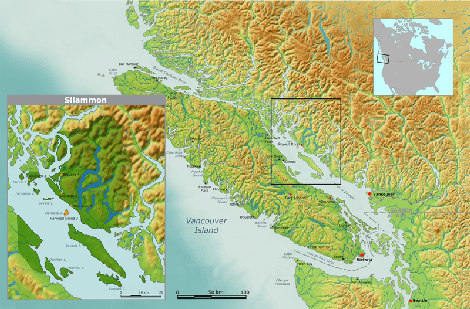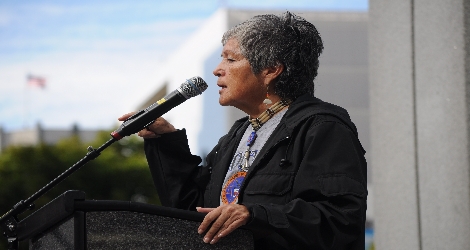The Trail of Diaspora
So, with the tribe’s sacred center destroyed, and other Wiyot villages along the Eel river similarly butchered, the last remaining 200 Wiyot (down from 2,000 just a year earlier[7]) were scattered to various reservations and military forts, where half of the remaining population died of disease, slavery, and ill treatment. A church group, in the early 1900s, purchased a single 20-acre parcel of land for homeless Wiyot, which was given reservation status by the federal government in 1908 (part of the 1906 treaty renegotiations), and held in “trust” for what was then the last remaining 100 members of the Wiyot people.
But in 1958, the Rancheria “Termination”[8] Act dismantled tribal status in California, effectively heading off any further claims to native lands. As far as the official records were concerned, Native Americans (or American Indians, as many prefer to be called) no longer existed, and you cannot claim land when you do not exist. As tribal elder Cheryl Seidner, granddaughter of the famous infant survivor of the Indian Island massacre, recounts, “at the stroke of a pen, my people were made extinct, but we were not dead.”[9]
The tribe filed an unlawful termination lawsuit against the Federal Government in 1975, starting an uphill battle that continues to the present day, as Wiyot descendants, along with descendants of “extinct”[10] Native American tribes all over California, struggled and still struggle for recognition—and then struggle again for rights to ancestral lands that hold remains of their culture and of their ancestors themselves. The Wiyot tribe would finally be legally reborn in 1990 with federal recognition and trust status reinstated, yet it would be another eleven years before the tribe would see their first glimmer of hope in reacquiring Duluwat Island.
Elusive Justice
The Tuluwat settlement on Duluwat Island was home to a thousand-year-old, six-acre clamshell mound (midden) containing the layered cultural history and ancestral remains of the Wiyot people. In the 130 years following the 1860 massacre, the island was diked, drained, and rechanneled first for agriculture and dairy land, then from 1870-1990 as a dry dock for ship repair. The dredging and rechanneling of the salt marsh and bay surrounding the island caused irreparable erosion to the shell mound.[11] A century and a half of un-policed grave robbing has further depleted the wealth of sacred history from the Wiyot’s most holy and sacred site.[12] Add to this the fact that those responsible for the massacre (though known by name and by previous incidents[13]) were never formally accused nor tried for their crimes, and the injustices continue to multiply.
On the flip side of the coin, California’s history as a state is over 160 years old. Land acquisition, sale, purchase, and inheritance have now covered over six generations since the first European settlers of the state made their claims. Samoa Bridge, an integral part of State route 255 completed in 1971, now bisects what today is simply known as “Indian Island,” connecting the Samoa peninsula, Duluwat Island, and Eureka on the mainland. So while it is clear that justice has been denied to the Wiyot people, the question that lies before the millions of Californians both past and present who lay claim to this land is: what does justice look like 150 years after the “Indian Island Massacre”?






Unbound Social